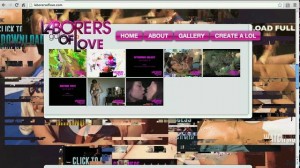Time and Motion: Redefining Working Life — Previewed
Fred Johnson ponders a future defined by industrial and economic mania, ahead of FACT’s new, provocative exhibition…
The themes of Time and Motion might at first seem rather vast concepts to try and capture in an art gallery, and yet to dismiss FACT’s upcoming exhibition of the same name would be a mistake. For to allay our fears we need simply look to the subtitle: Redefining Working Life. This is the focus we seek, and indeed Time and Motion: Redefining Working Life may be one of the most broadly relevant and to-the-minute exhibitions the organisation has hosted for some time.
It’s no secret that the world we live in is one both tumultuous and progressive. Technology and science are moving at a staggering speed, and our economical and political plains, whilst not as forward-facing, are unstable and fluid enough to warrant discomfort. Stability just cannot be relied upon since our culture has become so complex it requires constant maintenance — and who is there to maintain it but us ourselves?
It is no surprise then that the working day for just about everyone has changed dramatically in the last few decades. The eight-hour day (a mark of stability first introduced as a reaction to industrial-age exploitation by the visionary writer and campaigner Robert Owen) is more and more becoming a relic of a lost age, and the once separate spheres of work, rest, and leisure are becoming increasingly irrelevant as they merge and intertwine.

FACT hope to be amongst the first to document this change in their latest exhibition, and have collected the works of many prolific artists to help track the changes of the working day and to identify its true state. Artwork of all different mediums will feature: Gregory Barsamian’s disturbing and dreamlike kinetic sculpture (main video); Harun Farocki’s documentary Workers Leaving The Factory, tracking changes amongst the working classes; and Sam Meech’s machine-knitted banner, Punchcard Economy, providing some concrete (albeit artistically loaded) data on how the eight-hour day is holding up in today’s society.
More controversial projects, such as Stephanie Rothenburg and Jeff Crouse’s website, Laborers of Love, provide a more uncomfortable insight into how our economy of mass-consumerism has wormed its way into the darkest corners of our physical and digital worlds. Utilising Amazon’s mturk.com, an online marketplace where users can hire any of thousands of workers around the world to complete menial tasks that still require human input, the artists encourage users to create their own pornographic film. Workers will seek out videos conforming to the customer’s directions, and if necessary create their own images. It is a reminder that a price can be put on anything, and serves as a telescope towards an ambiguous future of digital prostitution in a form that seamlessly blends work and art.
This cocktail of work and art is one that should perhaps become more popular in the coming years, as we see labour seep into other areas of our lives. Technology is, of course, mostly responsible; while tasks have become more efficient thanks to our machines, this hasn’t resulted in an easier day for the worker, but instead just more production completed.
A sour conclusion we’re left to poke at could be that somewhere in the last century, society has no longer been defined by cultural contentment and eloquence, but instead by industrial and economic mania. Whether this is leading to a bright or grim future is a question FACT will no doubt provide insights into when Time and Motion: Redefining Working Life is opened to the public this week.
Fred Johnson
Galleries open daily 12-6pm





